Blog
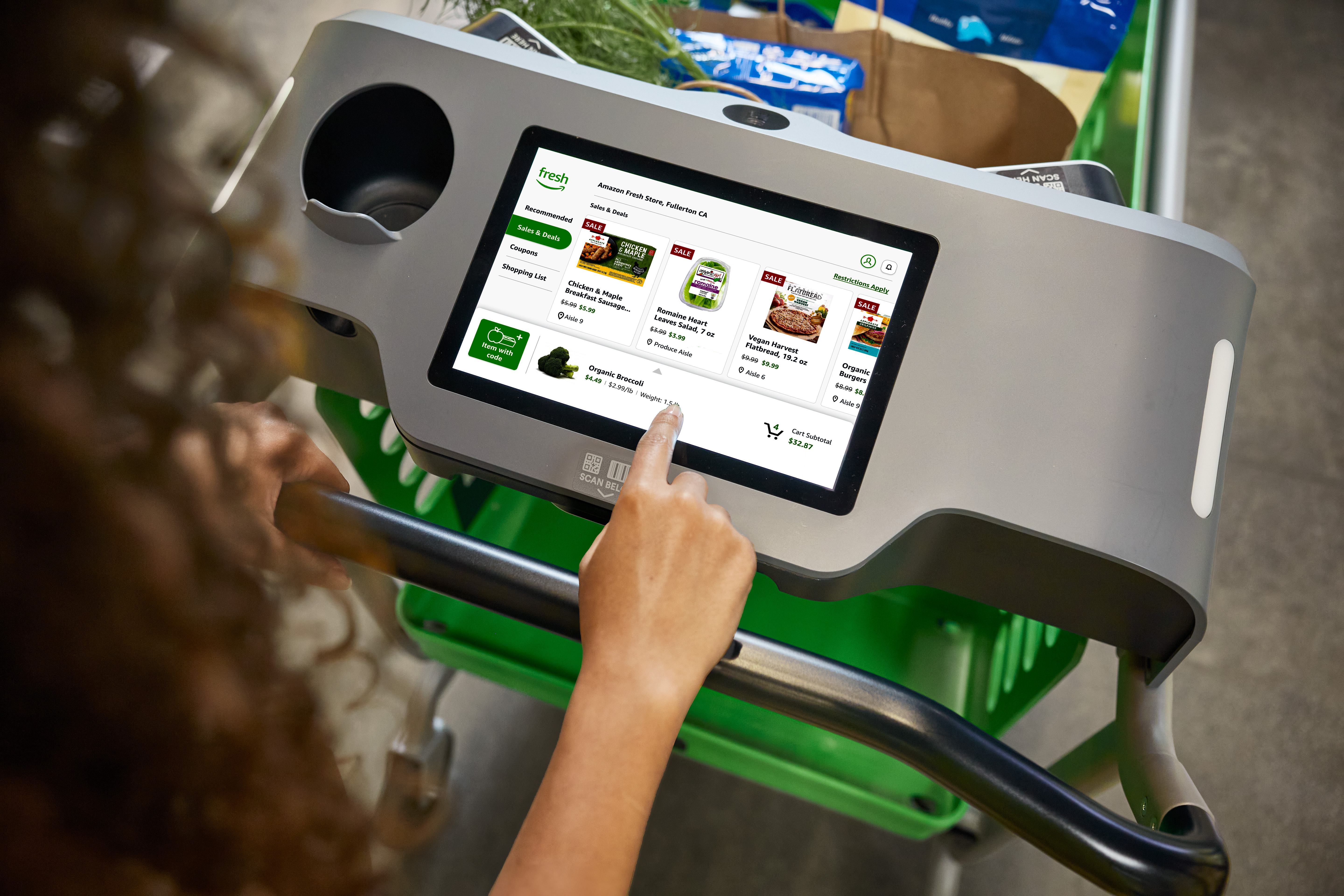
Today's world is media noisy, but much of the messaging is broadly delivered with minimal impact. Television and newspapers were primary historical mediums for delivering product knowledge, differentiation, and building consumer loyalty.
The average human attention span has dropped from 12 seconds in 2000 to a just 8 seconds in 2020. A goldfish now has a higher span that a human at 9 seconds.
The internet has intensified the media noise. Globally, individuals between the age of 16 to 64 now spend an average six hours, 40 minutes online (for the United States is 7 hours and 3 minutes). This equates to 47 hours per week and 101 days per year. By this estimation, beginning at age 18, a person who lives to 80 will have spent 17 years of their adult life using the internet.
The increased online digital noise is changing viewer habits of traditional media such as television. Note the decline in daily viewing time with digital surpassing traditional television in 2022.
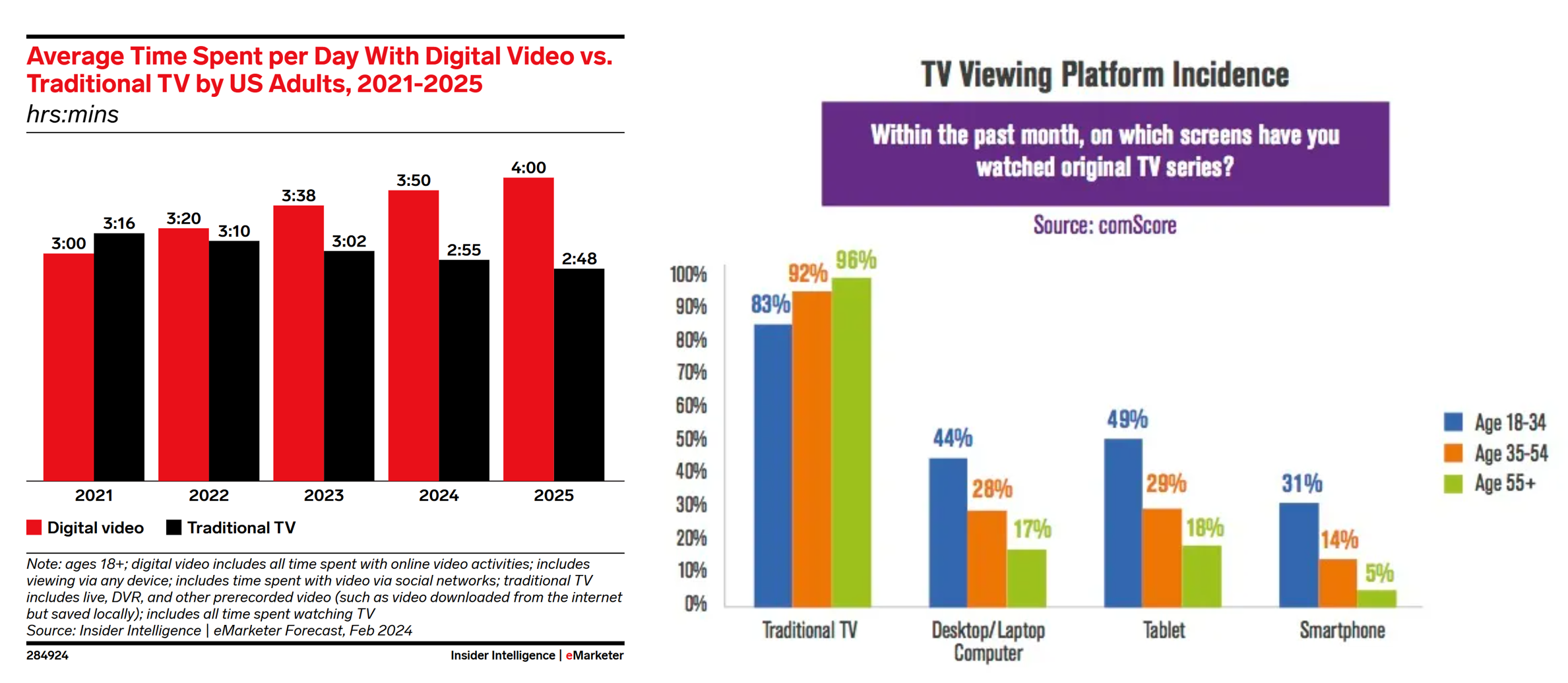
Younger generations are accelerating the shift to digital. About 1 out of 6 Millennials said they did not watch any original TV series from traditional TV sets within the past 30 days, a significant trend highlighting the potential for linear TV viewing to erode over time. If young people do watch television, it is on other digital devices, often skipping the commercials.
In the 1970's, the average person was exposed to 500 to 1,600 ads per day. The changes in media consumption including the proliferation of digital devices, growth of social media, programmatic advertising, and content distribution have dramatically elevated the ad numbers 4,000 to 10,000 per day.
Focusing on the retail industry, how does one break through all this digital noise and deliver effective content? Where is the best place to increase attention spans for targeted ads for the consumer? What is the profitable future of retail media networks?
The Retail Media Networks Opportunity
- Details

It is beginning to look a lot like Christmas, everywhere you go. With decorations now appearing in stores as early as August, reminders are everywhere on the continued importance of each holiday shopping season.
Some statistics on the importance of retail, the holiday season,and the impact on the overall USA economy:
Roughly 70% of U.S. gross domestic product (GDP) is generated by consumer spending. Holiday sales in the months of November and December have averaged 19% of total annual retail sales over the last five years. In 2023, USA retailers hired between 345,000 to 450,000 holiday seasonal workers. 75% of retail small businesses rely heavily on holiday sales to meet their annual revenue goals.It is time to summarize multiple of my favorite retail holiday forecasts For 2024, most of these project lower historical retail sales growth, even as the September's job report continued to deliver positive economic surprises.
Global Consumers Are Feeling the Pinch
- Details
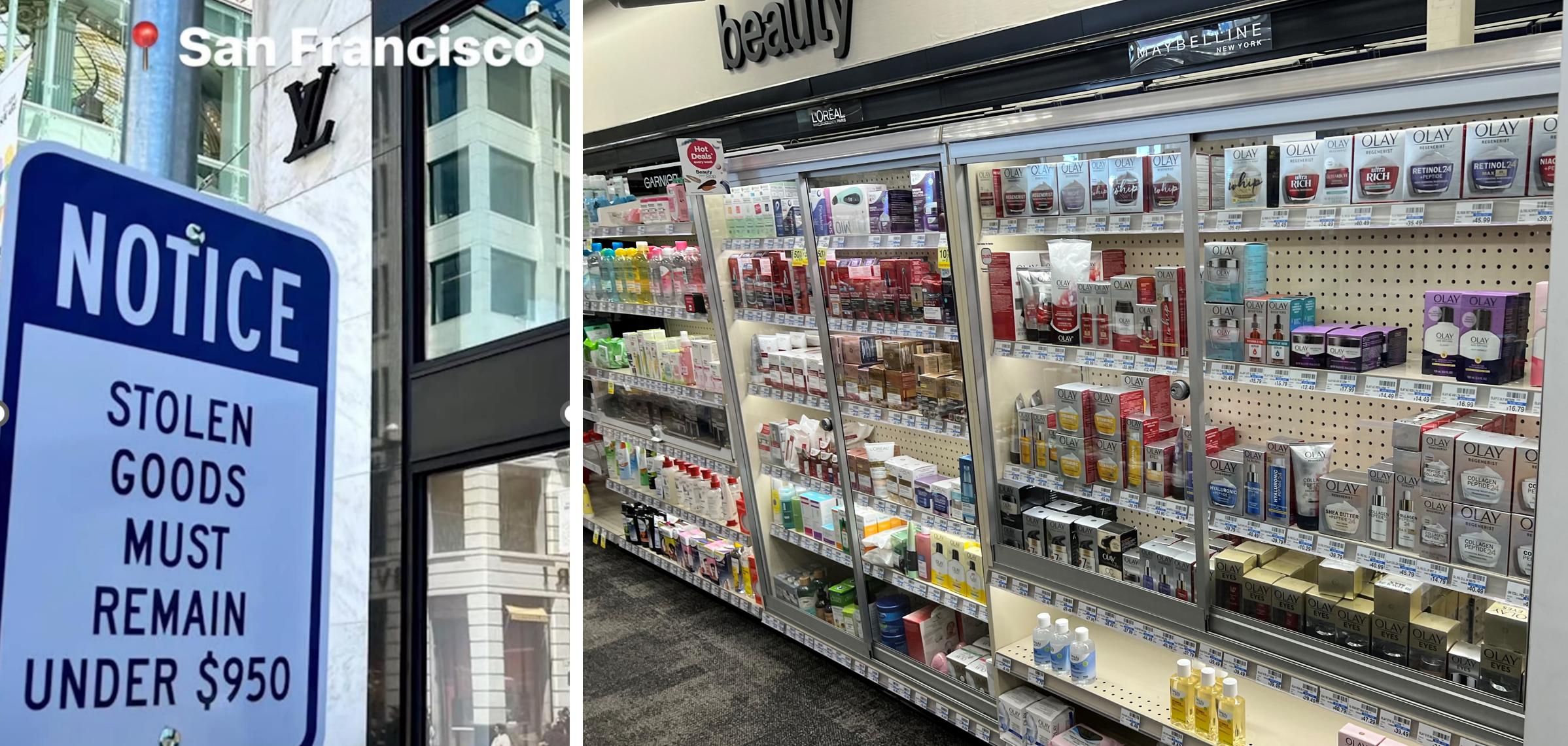
In the latest USA National Retail Federation Security Survey published in September 2023, retail shrink increased from 1.6% of sales from 1.4% in the previous year. This equates to $112.1 billion in losses, up from $93.9 in the previous year. The top 3 retailer priorities in the new NRF survey versus the previous year were organized retail crime (78.1%), violence during a criminal act (72.3%), and homelessness concerns (72.3%).
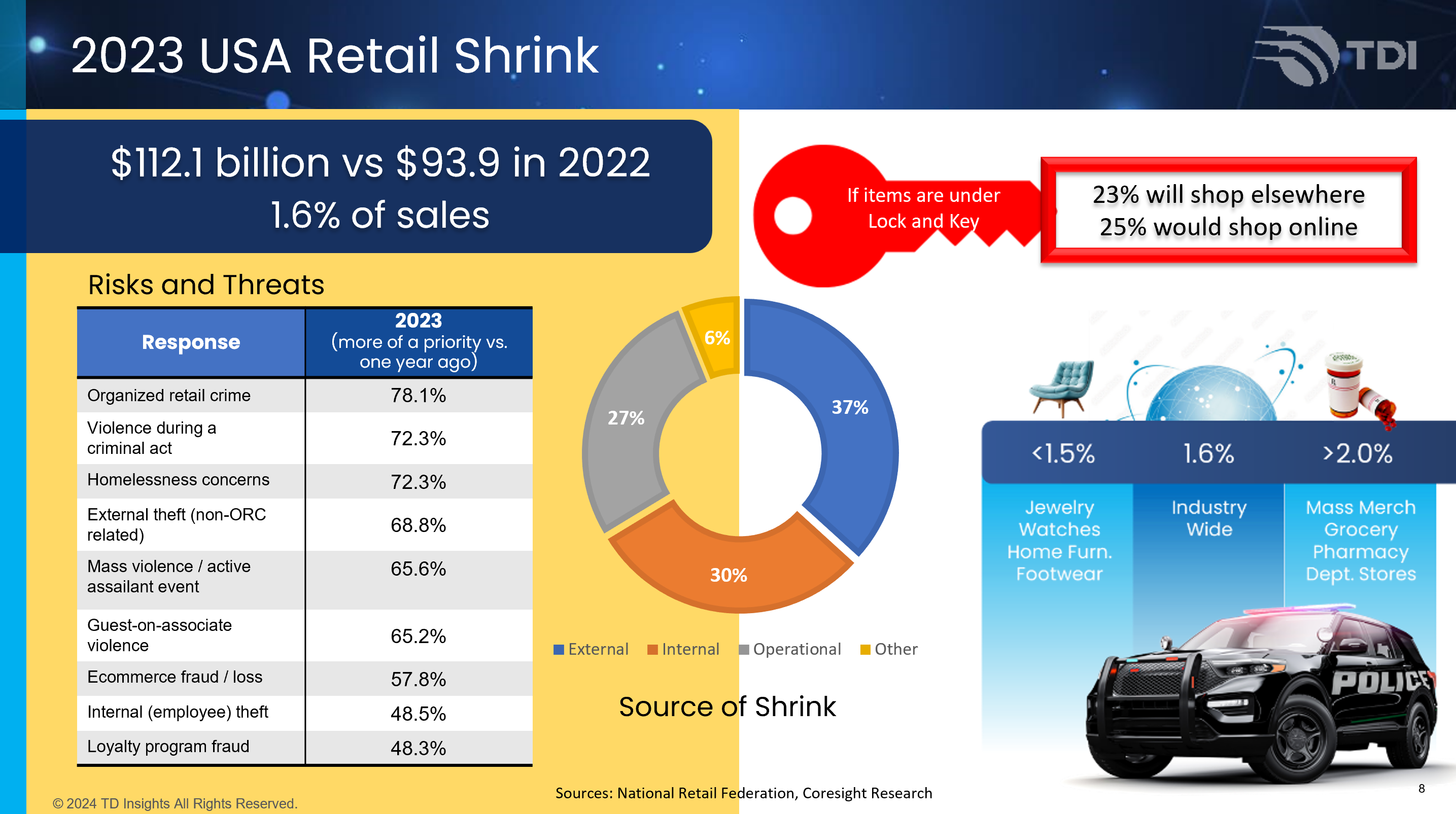
What's changed since the 2023 NRF security survey was published? How does theft impact inventory distortion? What are the latest shoplifting trends? How do consumers respond to retail theft? Why is retail crime at a crisis point? How does USA compare to other countries with this problem? How do we solve the problem of retail shrink?
The $1.7 Trillion Dollar Global Retail Problem
- Details

For all those that have been following my personal branding journey, the pattern that you should have recognized is that I am very passionate about three topics: retail, innovation, and leadership. When I am interviewed, often I tell the reporters that I feel I was born in a retail store. That feeling is based on the reality that from Junior High School to a Master's Degree, I worked in a retail store. Post those university degrees, my first role was with the technology company NCR in sales and marketing and the passion for innovation followed.
The success of my retail and technology careers has their origin in a more fundamental building block of my life in the triad of passions which is leadership. Following a difficult week of reflection, I want to take a step back from retail and innovation content and return to the topic of leadership.
McKinsey defines leadership as "a set of behaviors used to help people align their collective direction, to execute strategic plans, and to continually renew an organization." There is one word in this definition that the most important than all the others.
If your ambition is to be a leader, the one word you need to focus on in the McKinsey definition is 'renew'. To renew means you embrace change as a required baseline element for success.
In a 1913 journal article, Mahatma Gandhi wrote, "we but mirror the world. All the tendencies present in the outer world are to be found in the world of our body. If we could change ourselves, the tendencies in the world would also change. As a man changes his own nature, so does the attitude of the world change towards him. This is the divine mystery supreme. A wonderful thing it is and the source of our happiness. We need not wait to see what others do." The famous quote that probably stemmed from this journal entry that is attributed to Gandhi (which he never actually said) is "be the change you want to see in the world."
Personally, embracing renewal and change has led to a life of continuous improvement. Every day is indeed 'Day One' which includes both learning something new and exploring endless possibilities for personal and professional growth.
Day 1 Philosophy Explained
- Details
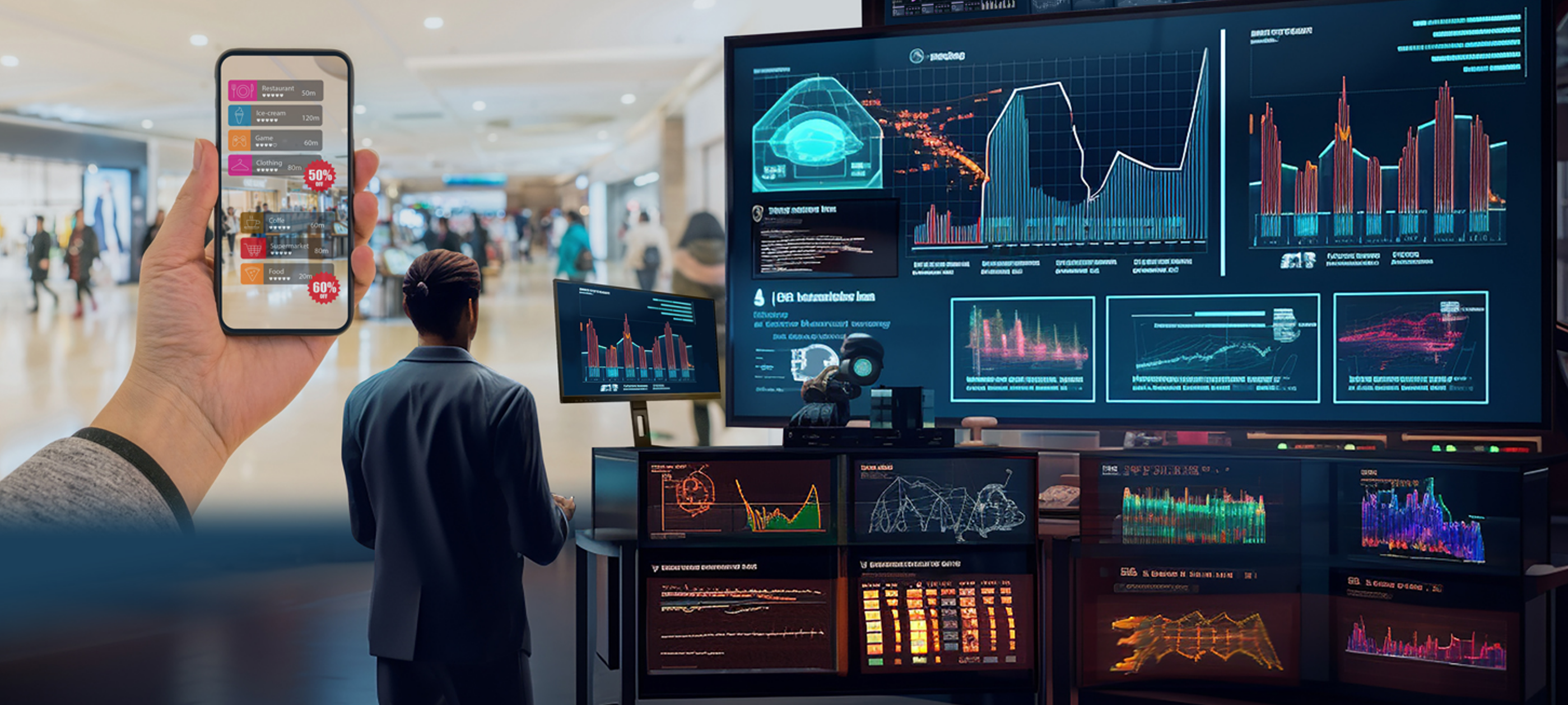
Digital retail transformation continues to be on my mind. This follows increased engagement with retailers on multiple continents and observing how they are embracing technology to create immersive experiences that drive more profitable operational efficiencies. From their lessons, the questions that I continue to contemplate include:
Will the future of retail be phygital or omnichannel? How will current trends from next generation shoppers such as Gen Z change retail in the next 10 years? What emerging technologies must make progress to deliver a more profitable future of retail?The Retail Boss nicely summarized the key differences between phygital and omnichannel retail strategies. "Phygital and omnichannel strategies both aim to enhance customer experiences but differ in their approaches. Phygital focuses on merging physical and digital worlds to create immersive, personalized experiences, often leveraging technologies like QR codes and augmented reality. On the other hand, omnichannel integrates various communication channels to provide a seamless and consistent brand experience across all touchpoints, such as physical stores, websites, and mobile apps. While phygital emphasizes the fusion of online and offline interactions, omnichannel prioritizes a unified customer journey across multiple platforms."
As Morningstar reported, "Generation Z, the first truly digital-native cohort, is rewriting the rules of engagement in the retail sector with their preferences and behaviors. Born into a world where the internet, smartphones, and social media are ubiquitous, zoomers' influence is shifting the retail paradigm from predominantly in-store interactions to a complex, integrated model that blends online and offline experiences seamlessly. Their comfort with technology and demand for instant, on-demand access to products and services are driving retailers to reimagine how they connect with consumers."
Technology will continue to disrupt retail business models. The industry's future requires increased digital strategies to turn consumers into brand ambassadors. Concurrently, the entire retail ecosystem and especially the physical store, must increase its digital stickiness through tech empowered store associates as equal brand ambassadors.
Future Consumers Technology Preferences
- Details
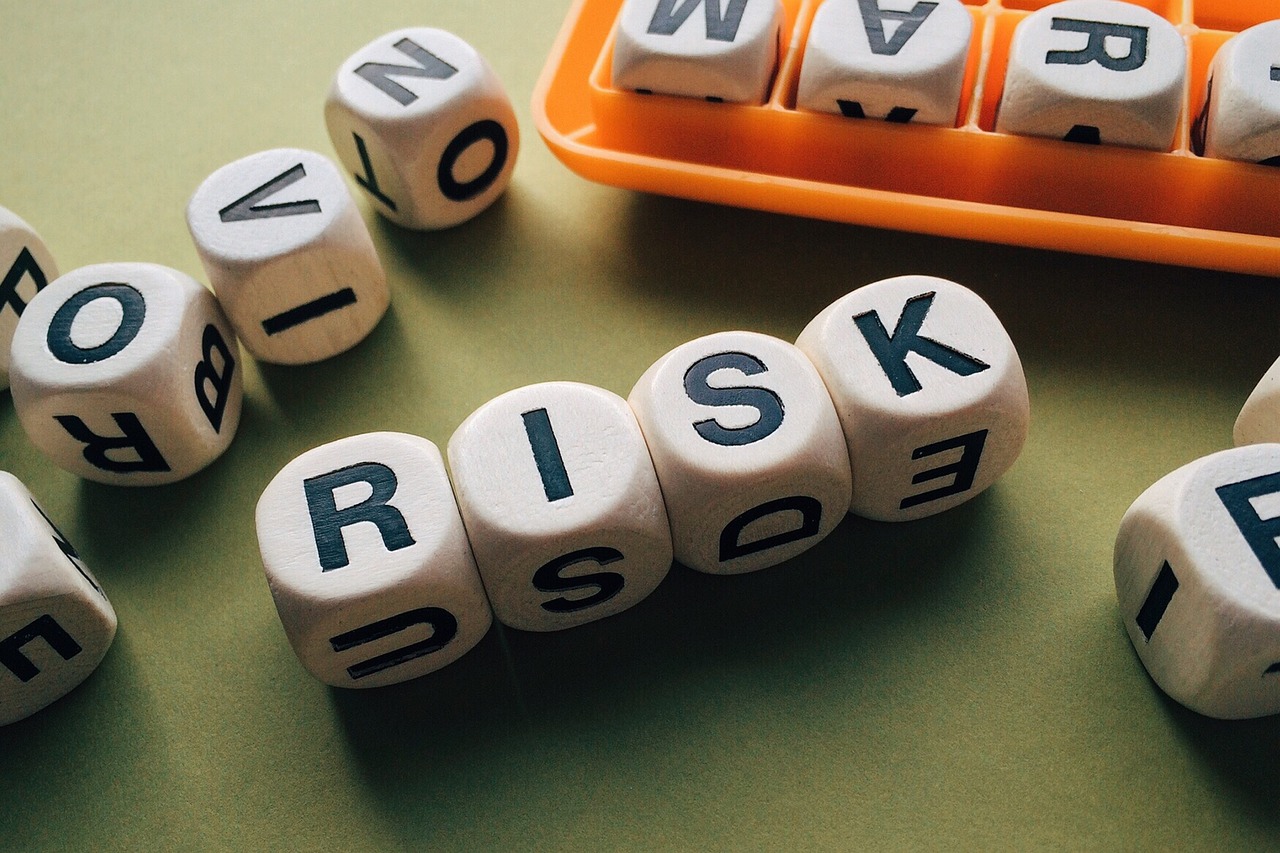
With the not too distant second half of 2024 ahead for all of us, digital acceleration and the global risks we still face have been on my mind. The world's population has now reached 8.1 billion people, all on an accelerated march towards greater connectivity and digitization. Nearly 70% of the world's population now has a unique mobile phone subscription; just over 67% of us are using the internet; and maybe not surprisingly, nearly 63% of all individuals living on earth have unique social media identities.
On average, each one of us is spending 6 hours and 34 minutes per day on the internet. Note the changes in media consumption that are taking place.
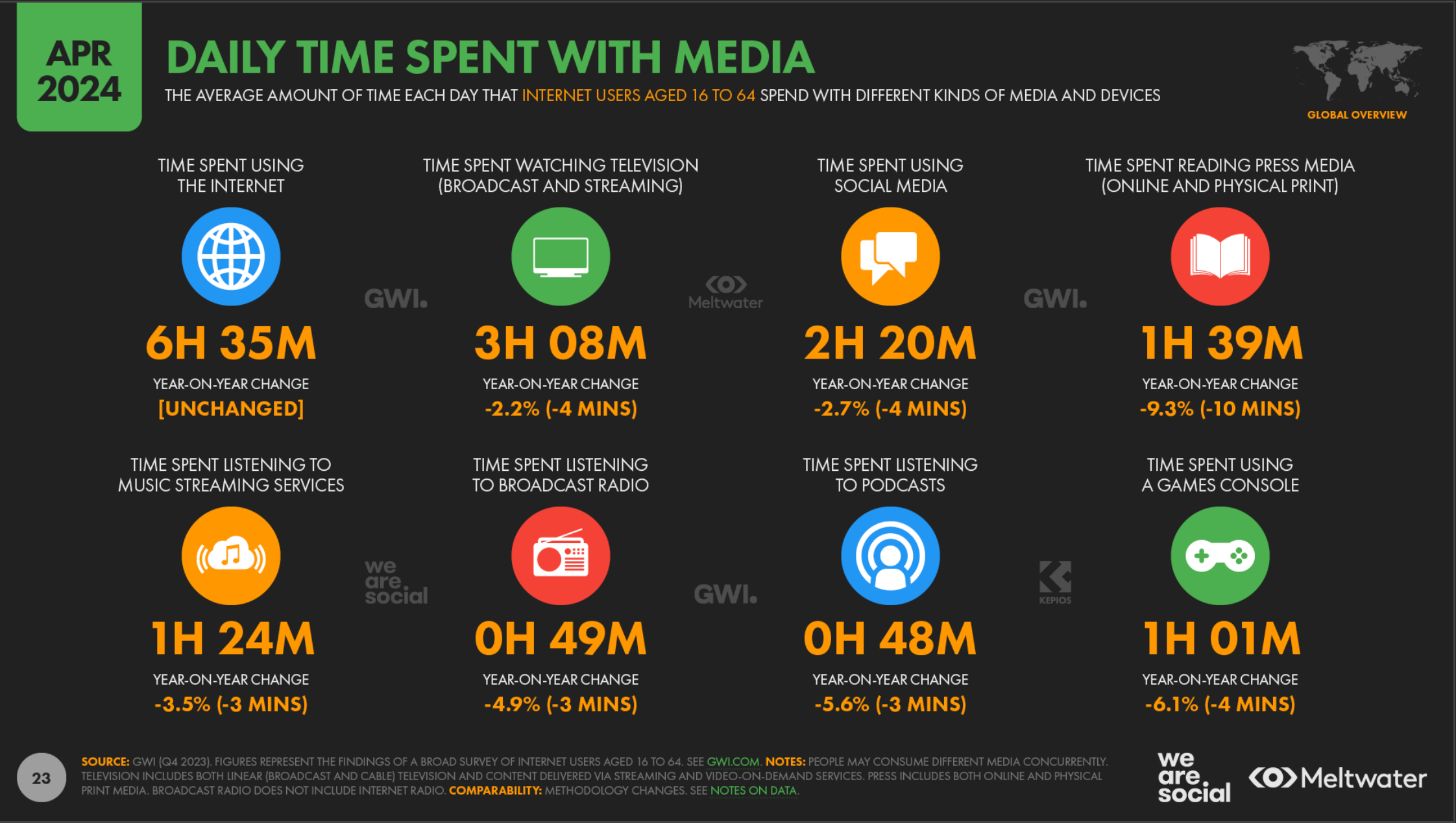
Traditional media such as television and radio continue its spiral decline. Americans are now roughly twice as likely to prefer getting their news from digital devices than television. Three-in-ten USA adults regularly get their news on Facebook with YouTube coming in second at 26%. For GenZs, one-third regularly scroll TikTok for news, up 255% since 2020.
Are these social trends driving us towards a brighter, more cooperative future?
AI is Just Getting Started
- Details
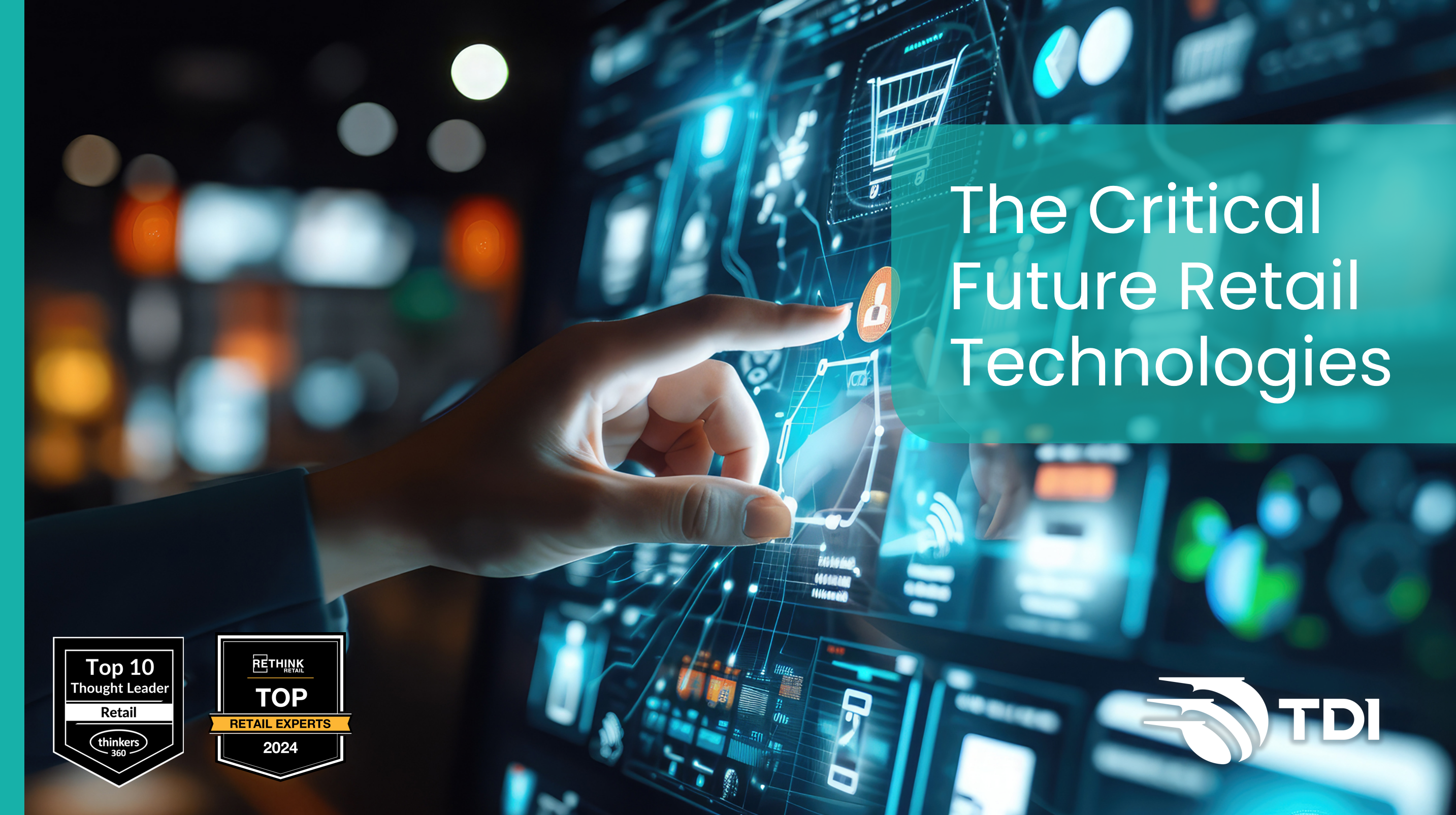
A favorite retail industry report which I hope Chain Store Age continues post their acquisition of RIS News was the annual Store Experience Study. The research highlighted the yearly technology priorities for retailers and its summary continues to be a mainstay as one of the charts in my 'Disruptive Future of Retail' keynote presentation.
According to the latest Store Experience Study, the top five technology priorities for retailers in 2024 are personalizing customer experiences, upgrading CRM / loyalty programs, empowering store associates, inventory visibility, and refreshing the point-of-sale infrastructure.
- Details
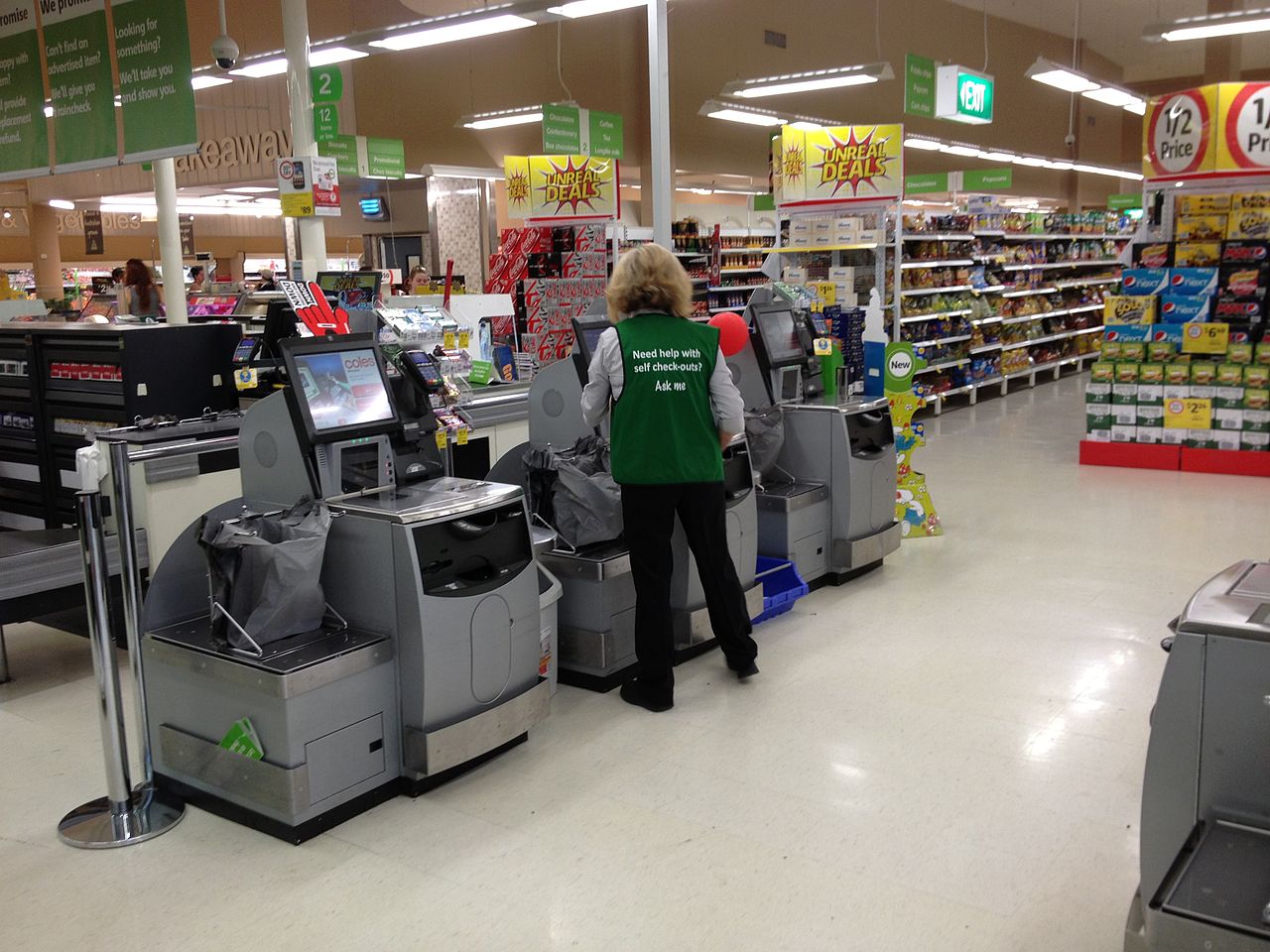
“(Self-Checkout) It’s facilitating errors, and in some cases, the steal.” – Santiago Gallino, Associate Professor at the Wharton School
According to the latest NRF Security Survey, retail shrink represents $112.1 billion in losses, up nearly 20% from the previous year. Similar high shrink growth rates can be seen in other countries such as the UK where in the latest British Retail Consortium research, customer theft, doubled to just shy of £2 billion ($2.5 billion).
As I predicted many years ago, the problem of retail shrink is on a collision course with frictionless commerce consumer trends. This growing challenge actually bring new positive opportunities for to both retail and the loss prevention function.
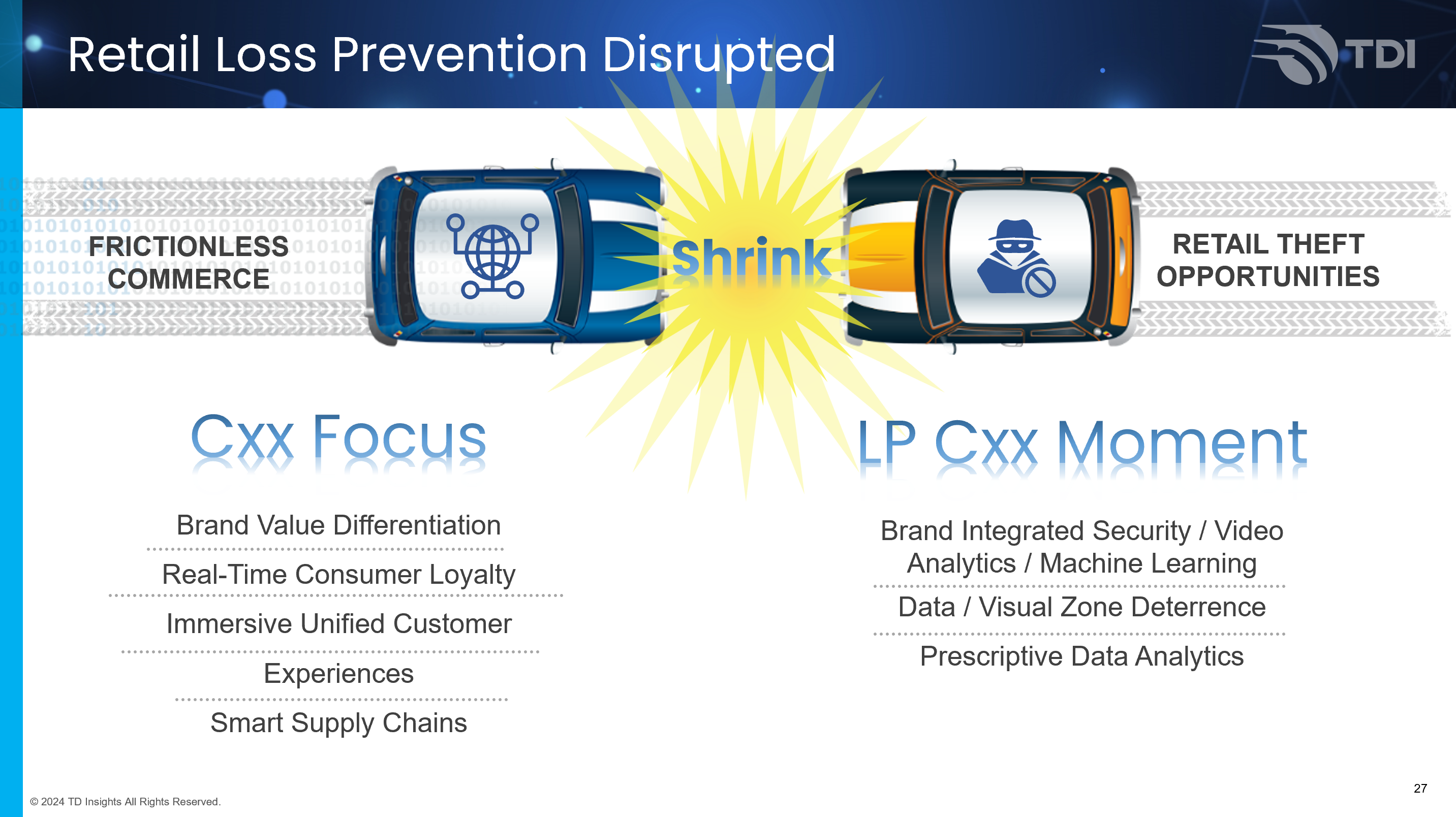
The shrink challenging counter revolution taking place in the retail industry, led by younger generations, is frictionless commerce. “Over 50% of consumers will switch to a merchant with less friction in the shopping experience. And, 41% of all consumers will pay more for simple, fast and efficient shopping experiences.”
Specifically to self-checkout, the 2024 Digital Commerce Index found that 43% of consumers favor self-checkout when shopping in a grocery store. By age range, that preference is even more interesting with 55% of 18-29 years old favoring it, 30-44 at 51%, 45-60 at 40%, and those aged 60+ at only 26%.
The genie is out of the bottle in terms of increased frictionless commerce in all retail sectors. To understand its impact in the apparel industry, read one of my previous article titled “Let’s Get Phygital and Get the Future of Retail Party On.” This article explores deeper the challenges at retail shrink at self-checkout and the accelerated adoption trends of frictionless commerce.
Stealing at Your Local Self-Checkout
- Details
With a Mix of Brand Challenges in the Retail Industry

Earlier this year, Brand Finance published its latest ranking of the world's most valuable brands. Displacing last year's number 1 Amazon, Apple has roared back to the top spot with an astonishing 74% brand value increase. The company's 2024 brand value growth is approximately equal to the total value of Starbucks’s, Mercedes-Benz’s, Tesla’s, and Porsche’s brands combined.
"Apple has grown its brand value through strategic diversification and premiumization, moving away from heavy reliance on iPhone sales towards ventures into wearables and services such as Apple TV subscriptions." According to Brand Finance research, more that 50% of respondents recognized Apple as expensive, but worth the price, reinforcing the brand's ability to demand a price premium.
This article looks deeper into the success at Apple and explores the overall most valuable / strongest global brands. Finally, it summarizes the retail and apparel companies that emerged as the global brand value leaders in 2024.
The Next Apple Big Thing
- Details

Once again, the ritual that is the January National Retail Federation Big Show is upon us. Over 40,000 people, 6200+ brands, 1000+ exhibitors, from 100+ countries participated in the NRF 2024 edition. My retail innovation leadership activities stretched out over five days logging over 75,000 steps or to be more exact 32.62 walking miles.
The greatest pleasure at this event is reconnecting with retail and technology leaders from around the world in one single location. This year was a reminder that we are well past the pandemic. Refreshingly, the hearty handshakes and hugs were back with both friends and business colleagues.
Personally, NRF 2024 was even more special as I returned as President of Sensormatic, the leading retail portfolio business of Johnson Controls. My agenda was super packed with retailers, press, and analyst’s meetings. Being a true retail technology industry ‘geek’, I did squeeze in my traditional trend spotting walk.
This article summarizes some of my favorite events and themes of NRF 2024. It highlights both the ‘hits’ that made NRF 2024 memorable and the one ‘miss’ that could have improved it.
Best Way to Start Each NRF: Retail ROI Super Saturday
- Details
















